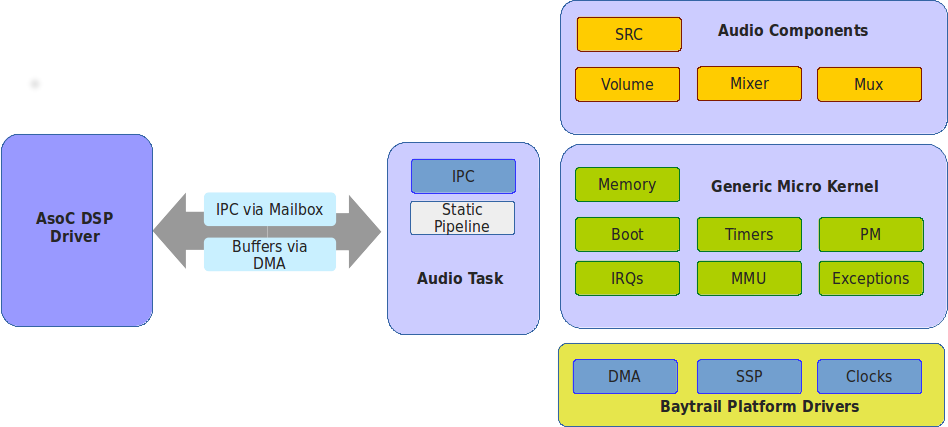Overview
Currently SOF has support for the Cadence Xtensa DSP architecture in UP and SMP modes in the upstream code base.
The diagram below shows the high-level firmware architecture with the Bay Trail platform integration as an example. The firmware is divided into four main sections:
Generic microkernel. The microkernel manages and abstracts the DSP hardware for the rest of the system. It also exports C APIs for memory allocation, scheduling work, event notifications, and power management.
Audio components. The audio components can be used to form an audio processing pipeline from the host DMA buffer to the DSP digital audio interface. Audio components will have a source and sink buffer where they will usually transform or route audio data as part of their processing.
Audio task. The audio task manages the audio pipelines at run time; it manages the transportation of data from source to sink component within the pipeline. The pipelines are currently statically defined in the firmware, but infrastructure is now in place to allow the dynamic creation of pipelines from Linux userspace.
Platform drivers. The platform drivers are used to control any external IP to the DSP IP. This will usually be things like DMA engines or DAI (Digital Audio Interface) controllers. These drivers are used by the audio components and pipelines to send/receive data to/from the host and external codecs.

Figure 9 Sound Open Firmware Architecture using Intel Bay Trail Platform
Each section above is well insulated from the other sections by partitioning code into separate directories and by using DSP and platform agnostic generic APIs for orchestration between the sections.